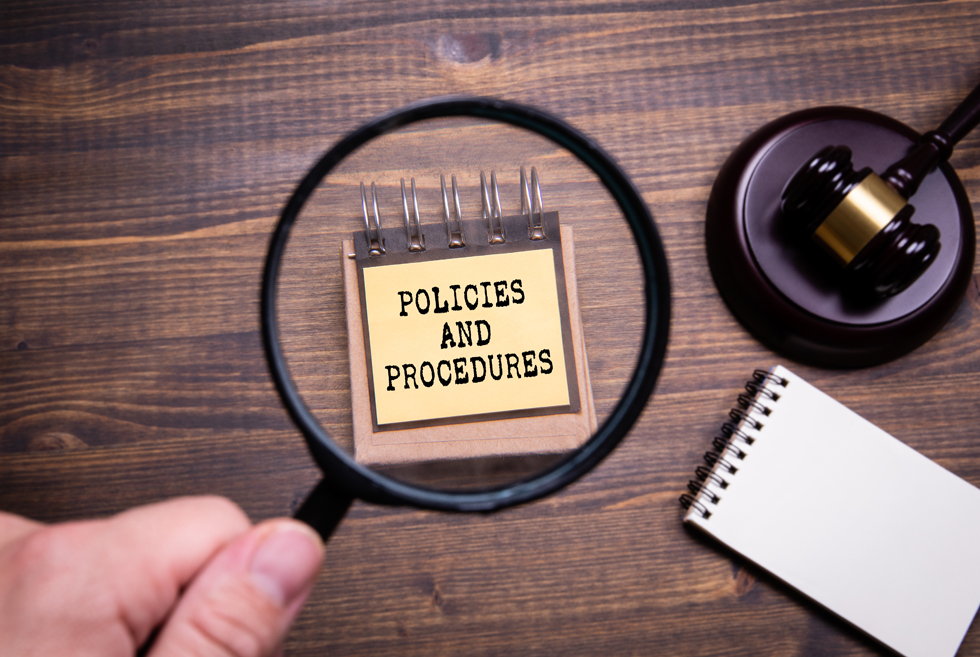
Make Sure Your Drug-Free Policy Is Current with These Questions
(March 2020) How useful is a policy when it’s just sitting on a shelf? Or if it’s outdated or simply not followed? Not very. Your drug-free workplace policy shouldn’t just take up space in an office (or on your computer). Instead, it’s meant to be a road map to guide any decisions you make regarding any company or employee-related alcohol or other drug (AOD) issue.
As the foundation of your drug-free program, and as a legal document, it is important your policy is followed and remains up to date. An ideal way to meet these objectives is to review your policy each year and make sure your staff is annually trained on its details and how it impacts their role with your company (and their personal relationship with AOD).
It’s up to you to confirm you are adhering to your policy, but here’s a list of questions to guide your policy review to make sure it’s working for your organization and covering the necessary details:
- Are all eight elements of a best-practice policy addressed? No matter who wrote your policy, or what company you work for, there are some basic elements all drug-free policies should contain:
- a purpose statement
- company contacts
- who the policy covers
- key definitions (e.g., on the job, under the influence, accident)
- information about where an employee could go for assistance with an AOD issue
- rules and expectations
- when and how testing will occur
- consequences of a program violation
Make sure these elements are addressed in your policy gives your drug-free workplace program a solid start.
- Does your policy reflect changes within your organization? It’s unlikely that nothing has changed within your organization since your policy was created (unless it’s only a few months old). Review your policy for
-
- References to employee titles and roles – For example, has the person overseeing your program (i.e., your program administrator) changed? If your policy references this position and you’ve experienced turnover, or the job title has changed, your policy should be updated to reflect that change.
- Names and numbers of company-identified helping resources – Have you made changes to who you refer people to? Are their name and contact information still correct? Your employees need to have accurate information in the event they need to use the resources referenced in your policy.
- Contradictions with other company policies – Your drug-free policy likely references information contained in other policies (e.g., accident reporting, attendance). If protocols or expectations have changed in one policy, it’s important to see how those changes impact other policies. For example, when it comes to post-accident drug testing, do both your drug-free policy and your accident reporting policy have the same expectations around when/how soon an accident should be reported?
-
- Are new laws and/or guidelines from authorities taken into account? Laws change. Your policy needs to address those changes (and employee’s expectations around those changes). We’re fully aware that marijuana (medical and recreational) and CBD are game changers for businesses across the nation. Your policy must be updated/clarified to address how these changes affect your program and employees – even if you’re not required to permit use.
On a related note, your policy should also reflect changes from regulating authorities. For example, OSHA clarified what is a testable accident. Did your policy change to match?
- Do your employees work out-of-state? Beyond the patchwork of marijuana laws, other drug-free workplace laws differ by state. For example, the types of drug tests and acceptable reasons for doing such tests may be different depending on the state. And if something happens while an employee is in another state than where you normally operate, your policy and procedures may not be appropriate – you may have to comply with the local laws. If the states where your employees are physically working have changed, you might need different policies (or slight adjustments to your current policies) to accommodate the laws in those states.
- Are there environmental situations you need to adjust for? No, this isn’t about the weather. This is about examining what elements, outside of your control, could be impacting your business and preferences regarding your drug-free workplace policy and program. For example, businesses have been experiencing a hiring crunch. How do you currently handle an employee who tests positive? Does your policy allow you to offer them a second chance? Is this an approach you might want to consider in order to retain a quality worker? Similarly, drug use trends change. Years ago, we didn’t hear much about the wide-spread misuse of pain medications, but it’s become a huge issue in our society. Are you testing for the most commonly misused drugs? Remember, drug tests only test what you tell them to test for.
If answering any of these questions triggered some needed changes, start the process now to get your program updated (we can help if you need it). You don’t want to get caught in a situation with no guidance on how to handle it or start making gut-based decisions instead of policy-driven ones.
And if you didn’t identify any needed updates, way to go! Be sure to set yourself a reminder to take out your policy next year to make sure it is still relevant.
Remember, your policy is a legal document and the cornerstone of your drug-free workplace program. It is what grounds the other four program elements – employee education, supervisor training, drug testing and assistance for employees. But it’s also not set in stone. If something has been updated to work better – make sure that change is documented. If something isn’t working – change it (if permitted by your authorities). Having your policy up to date (and following it) helps ensure you have a functional, legally-sound program.